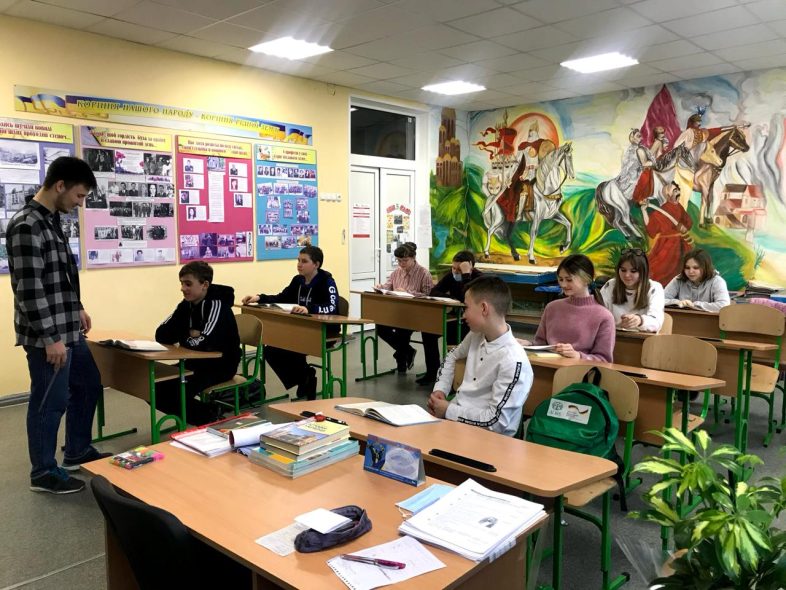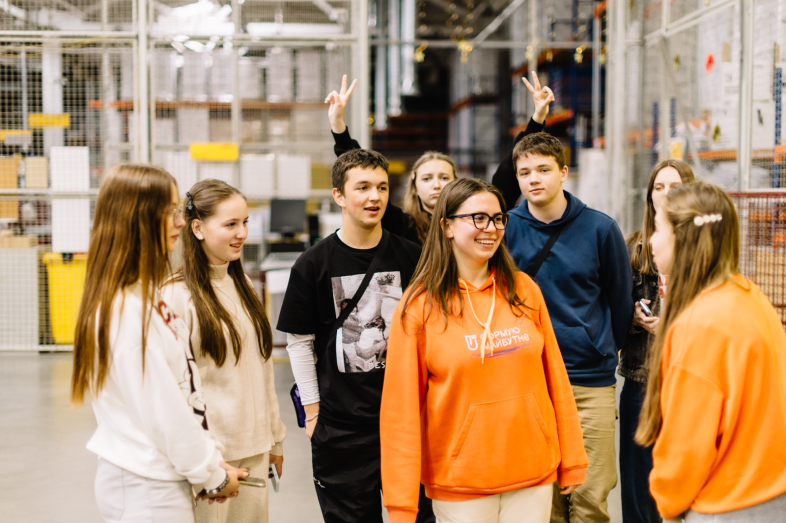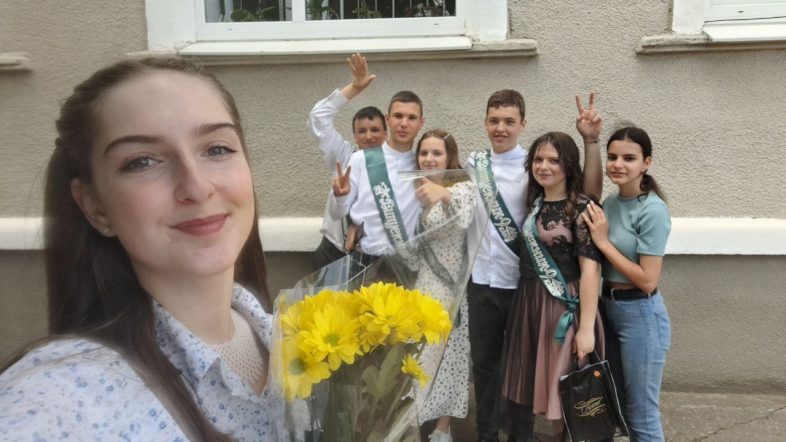The full-scale invasion, despite its devastating effects, actually sparked a major shift in Ukrainian education. By February 24, 2023—just a year after the invasion started—the charitable foundation savED, together with the Cedos Analytical Centre and the International Renaissance Foundation, published a big report called “War and Education: How a Year of Full-Scale Invasion Affected Ukrainian Schools.” For the first time, this study laid out exact numbers on how many schools were destroyed, and how many students and teachers were displaced. It also tackled the tough challenges facing the education system and recovery efforts.
Since then, there’s been a flurry of other studies diving into various issues, like how the war has affected students’ emotions, the safety of learning environments, school needs, teenage fears and well-being, learning losses, and how to close the educational gaps. Nowadays, nearly every educational organisation is using its own data to navigate these challenges, giving teachers real evidence of the problems they’ve been grappling with without clear numbers before.
One key takeaway from these studies is that the gap between education in cities and smaller towns is getting wider. Teachers from rural schools across Ukraine who have been through the invasion are sharing their insights on how the war has transformed educational opportunities in these tough times.
The Ukrainian Week gathered comments from experts in school education, including teachers, mentors, and educational managers across Ukraine.
Mykola Overchenko, educational programme manager at East SOS Charity Foundation, is a history teacher and an alum of the Teach for Ukraine programme
Educational opportunities and challenges for kids in suburban areas, especially in occupied or recently liberated parts of Ukraine, have their own quirks. One big plus is distance learning. Sometimes, local and international groups set up internet access so kids can join classes online.
Humanitarian aid is also a game-changer. Charities like East SOS provide essentials like textbooks, school supplies, and learning materials so kids can keep up with their studies. Plus, international organisations help with school repairs and meet various educational needs.
Adaptive teaching methods are key, too. Training for teachers and psychologists helps create a safe and supportive environment for learning. Personalised learning plans help kids who’ve faced psychological trauma grasp and remember what they’re taught.
However, numerous obstacles also persist. Infrastructural issues are a major concern. Due to the ongoing hostilities, many schools have been damaged or destroyed, making it impossible to hold classes. The shortage of computers, textbooks, educational materials, and reliable internet access further complicates the organisation of the educational process. Children who have experienced loss, witnessed violence, or been displaced often struggle with psychological trauma, which impedes their learning.

The lack of stable social support and community can significantly affect children’s motivation and ability to learn. The unpredictable security situation may force schools to remain closed or operate at reduced capacity. Frequent relocations due to safety concerns can disrupt education and sever connections with educational institutions. Economic hardships and the threat of danger have driven many teachers to leave unsafe areas, leading to a shortage of qualified educators. Additionally, the need for specialised training for teachers to work in post-conflict environments often goes unmet.
In 2021, I joined a volunteer initiative to support children living on the front line in the Luhansk region, aiming to help them access quality education. We not only assisted with their studies but also organised additional relief activities. This was centred around a school in the village of Novotoshkivka which has since been destroyed by the Russian army.
Viktoriya Komaryn is a mathematics teacher at Pokrovske Lyceum and an alumna of the Teach for Ukraine programme
Teaching in front-line areas comes with significant challenges due to their proximity to active conflict zones. For the past three years, I’ve been teaching in the village of Pokrovske, in the Nikopol district of Dnipropetrovsk region, situated on the edge of the former Kakhovka Reservoir. Just 13 km across the Dnipro River lie the occupied territories of the Kherson and Zaporizhzhia regions. In our village, offline learning is virtually impossible. We lack suitable shelters, Russian drones frequently fly overhead, and the community is regularly targeted by Russian artillery. This constant state of stress has a profound negative impact on the students’ mental health, safety, and overall quality of life.
Currently, it is unsafe to gather students in small groups, even for extracurricular activities. This lack of safe interaction has deprived students of the opportunity to socialise effectively with their peers at school.
The already challenging nature of online learning has been exacerbated by the threat of shelling and actual Russian attacks. I’ve noticed how much harder it has become for my students to engage with and absorb educational material. When lessons are interrupted by the threat of shelling or explosions outside the window, we have to cut them short. Unfortunately, this leaves students alone with their fears at home, and they often have to catch up on missed material by themselves.
Since meeting students offline in the village isn’t safe, I’ve been working to create online interaction opportunities. I run a career guidance club where students can explore their interests and learn about future career possibilities. Despite this, it’s clear how much the children yearn for face-to-face communication.

Alongside my students, we’re actively searching for ways to transport teenagers from the village to relatively safer areas for educational activities. For instance, a group of female students who took part in UNICEF’s UpShift programme learned about project management and secured a grant for a career guidance project. As part of their project, they went on a career exploration trip to the Ivano-Frankivsk region, where they spent nine days studying, socialising, and relaxing at a welcoming school.
Additionally, with the help of the NGO “Teach for Ukraine,” we organised several career guidance trips to Kyiv. During these trips, the teenagers had the chance to visit educational institutions and companies in the capital. I believe these experiences are highly successful and could be scaled up, but it’s disappointing that limited resources mean not all children living under constant threat have the chance to benefit from such opportunities.
Viktoriya Muzyka, mentor, teacher, alumna of the Teach for Ukraine programme
In a city, schools can have over a thousand students, and sometimes, you can even spot a neighbouring school from your classroom window. Teachers usually connect with each other within their own school or through the district’s educational network.
In contrast, in united territorial communities (OTGs), schools are often much smaller, with around 50 students each. These schools frequently face staffing issues, with teachers covering multiple subjects beyond their specialisation (for example, a geography teacher might also teach nature studies or biology, and a physics teacher might handle maths). While there’s access to news, training, and new ideas, the spread of information in these smaller communities is quite slow. The network of schools outside big cities is pretty weak, so teachers often don’t have many chances to share ideas, learn new things, or develop professionally because there’s little connection between schools and villages.

So, what’s the reality we are facing? Kids in small-town schools get the basics but often miss out on extra learning opportunities. This is due to a patchy school network, not enough specialists, and the need to pitch in with family farm work. Usually, they only head to the district for sports, arts, or academic events, and it’s pretty rare for them to travel beyond the region with their whole class. Many believe that after ninth grade, their only option is college because getting into a university seems out of reach.
I used to question why students from rural areas got extra points for university admissions. Then I started teaching kids who hadn’t had English lessons for two years before I came along. That’s when it hit me: those extra points are a small way to make up for the lack of proper education they’ve had.
That’s where the 10:11 programme comes in. It’s a mentoring scheme designed to help kids from small communities break out of their limited educational bubble. Mentors with tons of experience in education and work offer guidance to high school students making big career decisions. There are plenty of programmes like this, but I’m curious—do teachers and students in these small towns even know they exist?
Tetiana Burynyk, mathematics and computer science teacher at Pyadytsky Lyceum, alumna of the Teach for Ukraine programme
Over the past three years, I’ve worked in schools across small communities in various regions and formats. One major difference I’ve noticed is the impact of the learning format itself. Online learning demands technology, adequate space, and strong self-discipline from students. As a result, many who could benefit from lessons end up falling behind if they lack even one of these essentials. In contrast, offline learning offers opportunities to those who might not be keen on exploring new subjects, as it encourages greater engagement.
Even though the two schools have different setups, the teenagers have a lot in common. For one, they’re both close to cities—just 5-15 km away from places that offer extra activities like clubs, youth groups, and additional classes. But, surprisingly, the kids don’t seem all that interested in these opportunities.
I think this lack of interest often comes from not really understanding why these activities are worth it. They’ve never really been given a chance to try them out, so they don’t know what they’re missing. To get them engaged, I’ve had to either push them to join in or sweeten the deal with things like trips, cool merchandise, or extra days off from school.
So, it’s not that there aren’t opportunities for these teens—there are. The bigger issue is that they aren’t taking advantage of them. It seems to me that the real challenge is changing how they feel about learning and development. Instead of just adding more opportunities, we need to help them see why these experiences are valuable so they can really make the most of them.


